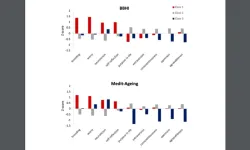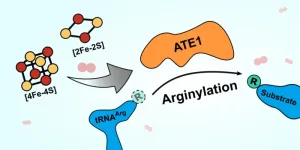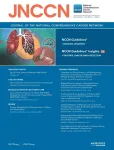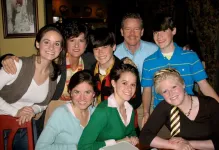(Press-News.org) COLUMBUS, Ohio – Most of what scientists know about viruses in animals is the list of nucleotides that compose their genomic sequence – which, while valuable, offers very few hints about a virus’s ability to infect humans.
Rather than let the next outbreak take the world by surprise, two virologists say in a Science Perspective article published today (March 10, 2023) that the scientific community should invest in a four-part research framework to proactively identify animal viruses that might infect humans.
“A lot of financial investment has gone into sequencing viruses in nature and thinking that from sequence alone we’ll be able to predict the next pandemic virus. And I think that’s just a fallacy,” said Cody Warren, assistant professor of veterinary biosciences at The Ohio State University and co-lead author of the article.
“Experimental studies of animal viruses are going to be invaluable,” he said. “By measuring properties in them that are consistent with human infection, we can better identify those viruses that pose the greatest risk for zoonosis and then study them further. I think that’s a realistic way of looking at things that should also be considered.”
Warren co-authored the opinion piece with Sara Sawyer, professor of molecular, cellular and developmental biology at the University of Colorado Boulder.
One key message Warren and Sawyer want to get across is that knowing an animal virus can attach to a human cell receptor doesn’t paint the whole picture of its zoonotic potential.
They propose a series of experiments to assess an animal virus’s potential to infect a human: If it is found to enter human cells, can it use those host cells to make copies of itself and multiply? After viral particles are produced, can they get past human innate immunity? And have human immune systems ever been exposed to another virus from the same family?
Answering these questions could enable scientists to put a pre-zoonotic candidate virus “on the shelf” for further research – perhaps developing a quick way to diagnose the virus in humans if an unattributable illness surfaces and testing existing antivirals as possible treatments, Warren said.
“Where it becomes difficult is that there may be many animal viruses out there with signatures of human compatibility,” he said. “So which ones do you pick and choose to prioritize for further study? That’s something that needs to be carefully considered.”
A decent starting point, he and Sawyer suggest, would be operating on the assumption that viruses with the most risk to humans come from “repeat offender” viral families currently infecting mammals and birds. Those include coronaviruses, orthomyxoviruses (influenza) and filoviruses (causing hemorrhagic diseases like Ebola and Marburg). In 2018, the Bombali virus – a new ebolavirus – was detected in bats in Sierra Leone, but its potential to infect humans remains unknown.
And then there are arteriviruses, such as the simian hemorrhagic fever virus that exists in wild African monkeys, which Sawyer and Warren recently determined has decent potential to spill over to humans because it can replicate in human cells and subvert immune cells’ ability to fight back.
The 2020 worldwide lockdown to prevent the spread of COVID-19 is still a fresh and painful memory, but Warren notes that the terrible outcomes of the emergence of SARS-CoV-2 could have been much worse. The availability of vaccines within a year of that lockdown was possible only because scientists had spent decades studying coronaviruses and knew how to attack them.
“So if we invest in studying animal viruses early and understand their biology in more detail, then in the case that they were to emerge in humans later, we’d be better poised to combat them,” Warren said.
“We are continually going to be exposed to the viruses of animals. Things are never going to change if we stay on the same trajectory,” he said. “And if we stay complacent and only study those animal viruses after they jump into humans, we’re constantly going to be working backwards. We’ll always be behind.”
#
Contact: Cody Warren, Warren.802@osu.edu
Written by Emily Caldwell, Caldwell.151@osu.edu
END
EAST LANSING, MI – The International Research Network for Nuclear Astrophysics (IReNA), supported by the National Science Foundation (NSF) and headquartered at Michigan State University (MSU), brings together nuclear physicists, astronomers, and computational scientists to try to answer a long-standing question in science: Where do the elements that make up our world come from?
Founded in 2019, IReNA continues to expand its global reach for cooperation to advance knowledge in nuclear astrophysics, and now welcomes a new network partner: the Ibero-American Network of Nuclear ...
“[...] there is a need to explore brain mechanisms through which psychological processes may exert their protective or deleterious effects.”
BUFFALO, NY- March 10, 2023 – Aging (listed by MEDLINE/PubMed as "Aging (Albany NY)" and "Aging-US" by Web of Science) published a new editorial paper in Volume 15, Issue 4, entitled, “Cognitive aging and dementia prevention: the time for psychology?”
Modifiable risk and protective factors (e.g. engaging in active lifestyles ...
Inflammatory neurological diseases, such as multiple sclerosis (MS), can arise when cell-to-cell communication between cells in the central nervous system (CNS) goes awry. But exactly how this cellular crosstalk leads to the molecular changes that drive disease remain unknown. To address this, researchers from Brigham and Women’s Hospital, a founding member of the Mass General Brigham health care system, developed a platform that allows them to perform genetic screens of cell-cell interactions to identify genes that control biologic processes. ...
A new paper in Nature Communications illuminates how a previously poorly understood enzyme works in the cell. Many diseases are tied to chronic cellular stress, and UMBC’s Aaron T. Smith and colleagues discovered that this enzyme plays an important role in the cellular stress response. Better understanding how this enzyme functions and is controlled could lead to the discovery of new therapeutic targets for these diseases.
The enzyme is named ATE1, and it belongs to a family of enzymes called arginyl-tRNA transferases. These enzymes add arginine (an amino acid) to proteins, which often flags the proteins for destruction in the cell. Destroying ...
Physicists are learning more about the bizarre behavior of “strange metals,” which operate outside the normal rules of electricity.
Theoretical physicist Yashar Komijani, an assistant professor at the University of Cincinnati, contributed to an international experiment using a strange metal made from an alloy of ytterbium, a rare earth metal. Physicists in a lab in Hyogo, Japan, fired radioactive gamma rays at the strange metal to observe its unusual electrical behavior.
Led by Hisao Kobayashi with the University of Hyogo and RIKEN, the study was published in the journal Science. The experiment revealed unusual fluctuations in the strange metal’s electrical charge.
“The ...
PLYMOUTH MEETING, PA [March 10, 2023] — New research in the March 2023 issue of JNCCN—Journal of the National Comprehensive Cancer Network highlights how the lack of genomic research for people with African ancestry, particularly those from the Sub-Saharan region, is hampering efforts to reduce disparities for people with cancer. In a first-of-its-kind study, the researchers evaluated molecular genetic results for 113 Black South African men diagnosed with advanced prostate cancer to find evidence for ...
Individuals with Type 1 diabetes have a smaller pancreas than people without diabetes. This is surprising because insulin-producing beta cells account for just a small fraction of the pancreas, so the loss of beta cells in Type 1 diabetes would not be expected to reduce pancreas size.
Now, a study of one family from Alabama has led Vanderbilt University Medical Center researchers to discover that insulin deficiency, independent of the autoimmunity associated with Type 1 diabetes, is the principal factor leading to a markedly smaller pancreas.
Four ...
Urology involves some of the most intimate medical conditions, yet patients don’t necessarily always prefer to be treated by a urologist of their own gender, new research has found.
In some situations, male and female patients would prefer a male urologist but in others – if they have a painful condition, for example – both men and women would choose to be treated by a female doctor.
The study, by researchers from University Hospital Munich, is being presented today at the European Association of Urology (EAU) Congress ...
Testing for genetic mutations in urine can detect bladder cancer years before the disease shows clinical symptoms, new research has shown.
The study, by researchers from France, Iran and the United States, identified mutations across ten genes that were able to predict the most common type of bladder cancer up to 12 years in advance of diagnosis.
The findings are presented today at the European Association of Urology (EAU) annual Congress in Milan.
Bladder cancer is not a rare disease – it is one of the top ten most common cancers in ...
Existing thought in the orthopedic world is that treating a bunion with the minimally invasive procedure MISB may make a person’s flatfoot worse. A new study by researchers at Hospital for Special Surgery (HSS) in New York City shows that this procedure does not make flatfoot worse in people with asymptomatic flatfoot and may even improve the condition. The findings were presented today at the annual meeting of the American Academy of Orthopaedic Surgeons (AAOS).
“Because of the way the bunion correction is performed with MISB, there is a thought that it may not help stabilize the ...





